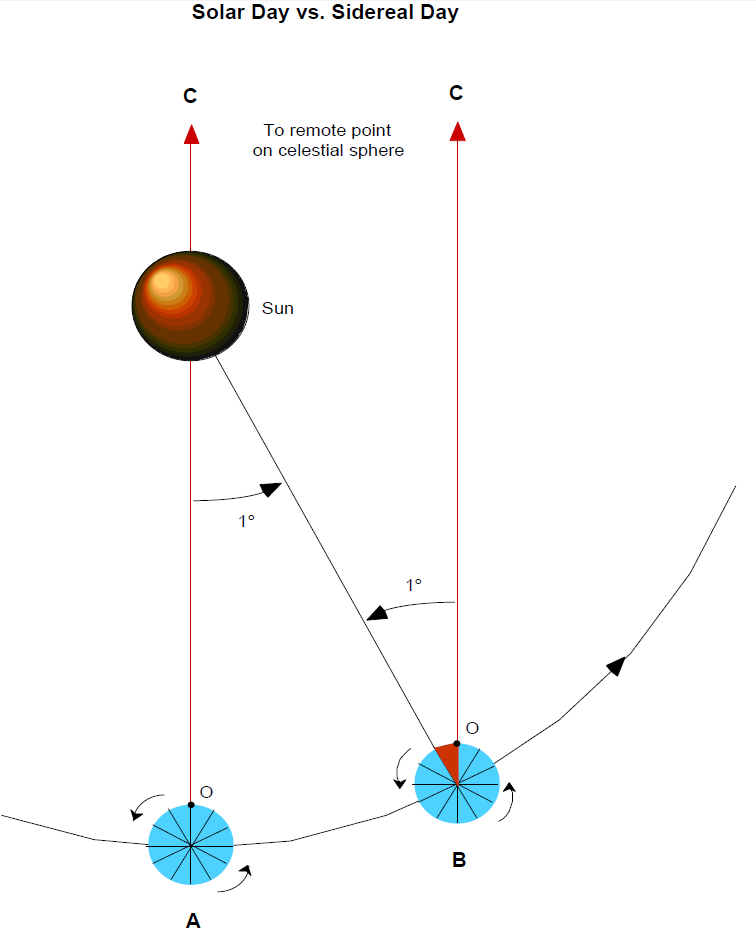


 الفيزياء الكلاسيكية
الفيزياء الكلاسيكية
 الكهربائية والمغناطيسية
الكهربائية والمغناطيسية
 علم البصريات
علم البصريات
 الفيزياء الحديثة
الفيزياء الحديثة
 النظرية النسبية
النظرية النسبية
 الفيزياء النووية
الفيزياء النووية
 فيزياء الحالة الصلبة
فيزياء الحالة الصلبة
 الليزر
الليزر
 علم الفلك
علم الفلك
 المجموعة الشمسية
المجموعة الشمسية
 الطاقة البديلة
الطاقة البديلة
 الفيزياء والعلوم الأخرى
الفيزياء والعلوم الأخرى
 مواضيع عامة في الفيزياء
مواضيع عامة في الفيزياء|
Read More
Date: 22-7-2020
Date: 25-8-2020
Date: 4-9-2020
|
Solar vs. Sidereal Day
The Earth rotates on its axis relative to the sun every 24.0 hours mean solar time, with an inclination of 23.5 degrees from the plane of its orbit around the sun. Mean solar time represents an average of the variations caused by Earth's non-circular orbit. Earth’s rotation period relative to the other stars (sidereal time) is 3 minutes 56.55 seconds shorter than the mean solar day.
The following figure explains this apparent discrepancy. Suppose the day starts when Earth’s orbital position is at A and the Sun on the meridian (that is, directly above the local southern horizon) of an observer at point O on Earth’s surface. When Earth has completed one rotation with respect to the distant stars (C), the Sun will not yet have advanced to the meridian for the observer at point O due to the movement of Earth along its orbit about the sun from A to B. To complete a solar day, Earth must rotate an additional 1/365 of a full turn, which takes nearly 4 minutes. Thus the solar day is about 4 minutes longer than the sidereal day. Therefore, a clock geared to sidereal time, in the space of one year, falls behind a regular clock by an amount equal to about one solar day (24 hours).




|
|
|
|
تفوقت في الاختبار على الجميع.. فاكهة "خارقة" في عالم التغذية
|
|
|
|
|
|
|
أمين عام أوبك: النفط الخام والغاز الطبيعي "هبة من الله"
|
|
|
|
|
|
|
قسم شؤون المعارف ينظم دورة عن آليات عمل الفهارس الفنية للموسوعات والكتب لملاكاته
|
|
|